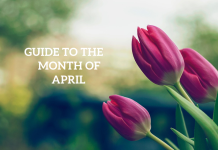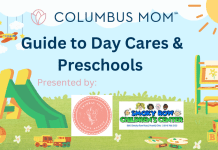Our daughter is four years old, and the “hard conversations” have begun. When streaming a kids’ movie the other day, my daughter noticed the mom was pregnant. My daughter asked, “Mom, I know I came from your belly. How did I get out?” I heard my husband nearly drop a plate in the kitchen right next door. “Well, here we go…..” I thought.
All families approach these types of topics and conversations differently. I know some families (like ours) use the anatomically correct language for private parts, and we always have, even when our daughter was first learning words. I know other families who teach their children that a penis is called a “po-po,” or maybe they use vague terms like “privates.” Likewise, there’s a lot of opinions on the word butt: booty, or bottom, behind, rear, heiny… the list goes on.
I don’t think that using anatomically correct language is new per se, but I do believe that as we continue to research and learn more about child development, teaching children from the beginning about our bodies, consent, sex, etc. shows to be more beneficial in the long run for social and personal development.
In the vein of tough questions, another one that my daughter has been asking a lot is: “Mom, is that a boy or a girl?”
Years ago, when she started asking this, I’d respond with however that person stereotypically presented themselves. I told my daughter my assumptions based on their appearance. But as I’ve worked with non-binary folks in my professional life and continue to learn more about sex and gender, I’ve realized it’s not my place to add those assumptions about gender, even when we’re pointing out a stranger who won’t hear us.
So, how do we talk to our kids about gender? And why is it important?
 First, let’s cover the first part of the “how.” Let me introduce…. The Genderbread person! This is an incredible resource that breaks down gender into smaller, easier-to-digest facts. It helps us know more (so that we can teach more) about sex, gender identity, gender expression and attraction. This resource also has downloadable posters and resources if you’re looking to use this as an educational tool. I also suggest checking out this resource if you’re not familiar with language like gender, gender identity, non-binary, transgender, gender nonconforming, etc. We’ll be using those terms throughout this article. (There are many resources listed at the end of this article to help learn more on these differentiations, as well).
First, let’s cover the first part of the “how.” Let me introduce…. The Genderbread person! This is an incredible resource that breaks down gender into smaller, easier-to-digest facts. It helps us know more (so that we can teach more) about sex, gender identity, gender expression and attraction. This resource also has downloadable posters and resources if you’re looking to use this as an educational tool. I also suggest checking out this resource if you’re not familiar with language like gender, gender identity, non-binary, transgender, gender nonconforming, etc. We’ll be using those terms throughout this article. (There are many resources listed at the end of this article to help learn more on these differentiations, as well).
We have begun talking in our house about gender identity and expression and no, I do not think it’s ever too early to start talking about inclusion. Will young kids grasp these concepts? Probably not. But by teaching them about these topics and introducing the language, these words won’t feel “silly,” “weird,” or “uncomfortable” when our kids find themselves in situations where gender is prevalent (and they will).
Before I answer some common questions from parents about gender discussions, let’s remind ourselves about why this is important. “The Trevor Project uncovered some alarming information about gay, lesbian, bisexual, transgender and other gender nonconforming young Americans: 48% of this group said that in the last 12 months, they engaged in self-harm; that number rose to 60% for trans and nonbinary youth. Even more worrisome, 40% of those surveyed reported having seriously considered attempting suicide during that period; Of the young people who identified as trans or nonbinary, more than half said they strongly considered ending their lives.” (Quote from this Forbes article)
This Forbes article says that suicide is the second-largest cause of death in young people in the United States and rates are higher among people in the LGBTQ+ community. But this data is inconclusive because many young people are still fearful of showing their authentic selves and choose not to outwardly identify as part of the community. These are facts supported by numbers and research; personal opinion will not change these statistics.
So basically, it comes down to this: teaching our young people about inclusive language saves lives. Because the more we know, the more stigmas will decrease, the more safety will increase, and with security comes a desire to keep living.
How do I start these conversations? Nationwide Children’s Hospital On Our Sleeves gives us a helpful acronym to begin these chats:
SECURE a safe and helpful conversation.
-
- Check out the website for the breakdown of the acronym and exactly what it means.
Here are some questions that arise as we explore gender:
- Are they a boy or a girl?
It’s best not to make any assumptions, even if it looks fairly evident what someone represents in their gender expression. It can be best to use non-binary terms like “they” and “them” because we don’t know their pronouns until a person self-identifies. Mara Iverson, director of education at LGBTQIA advocacy group Outright Vermont, suggests responding by saying, “We don’t always know just by looking at someone how they feel inside, but what makes you curious about it right now?” - What do we do if we aren’t sure about someone’s gender while in a public restroom?
From that same article quoted in question 1, it’s suggested that we say something along the lines of, “I know we are in the right place and I am trusting that they know they are in the right place, too.” - How do I teach my child to lean into their true self?
Start when they’re young, and if they seem too old now, start today. What kinds of things are they interested in? Do you have a young daughter who loves trucks and dinosaurs? Do you have a middle school son who loves theater? There is definitely a culture shift happening where we are becoming more inclusive and accepting of breaking through gender stereotypes. Still, kids need to know they have a safe space to express themselves if they are break through cultural gender stereotypes. Please support them in their hobby and encourage them to keep exploring. - How do I know if my child is transgender or gender-nonconforming?
Kids will tell us about their gender in very definitive ways. They will be consistent, insistent, and persistent, meaning that kids will show us instinctively and naturally show us who they are on repeat. Supporting your child and encouraging them through gender exploration is key. If you’re not sure how to do that, lean on a therapist in your community who specializes in LGBTQ+ identities.
As someone who works in the community with young people, I see a direct correlation between support for a child and their feelings of safeness and happiness. These conversations are also crucial for children who may not be struggling with their gender identity. Creating an open space for positive communication will continue to build a communicative relationship with your child, which all parents desire.
Resources:
An Article that breaks down how to talk to kids about gender by age range
An Article that shares how to talk to kids about gender
An Article from Nationwide Children’s Hospital on talking about gender identity
Youtube link that helps parents learn more about talking about gender
Books:
Being You: A First Conversation About Gender (First Conversations) Board book
(Buy Here)
Pink Is for Boys (Buy Here)
It Feels Good to Be Yourself: A Book About Gender Identity (Buy Here)
Beyond the Gender Binary (Buy Here)
My Shadow is Pink (Buy Here)
Just Ask!: Be Different, Be Brave, Be You (Buy Here)
















